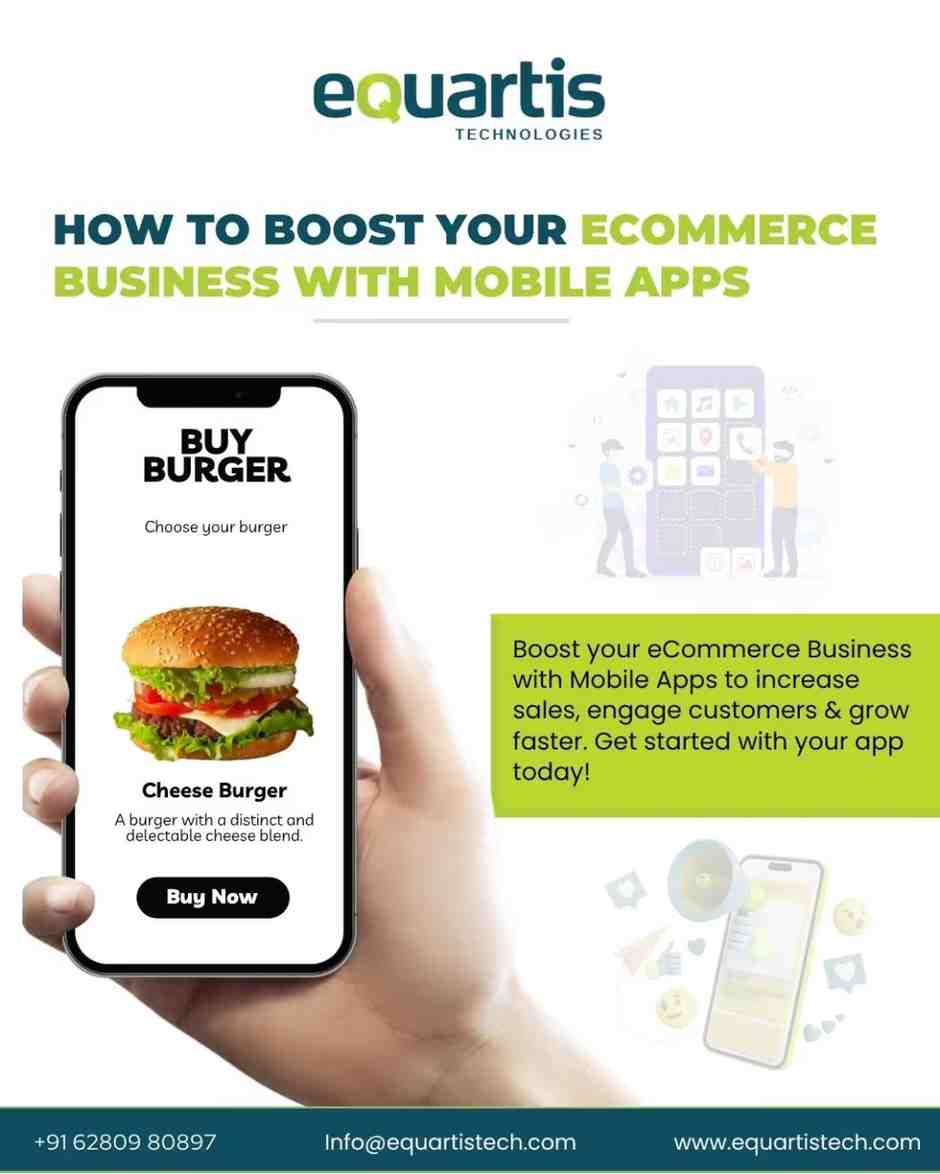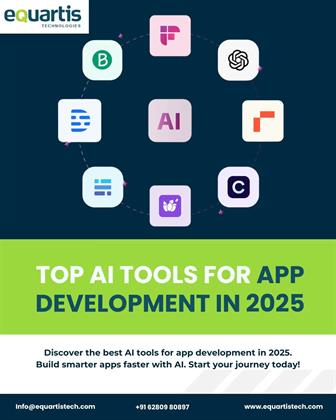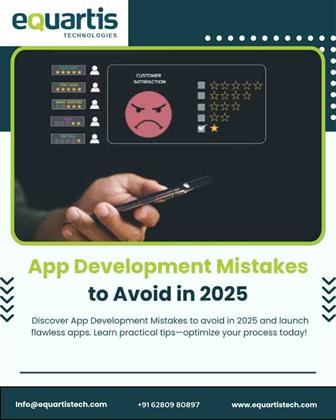
In today’s fast-moving digital world, people don’t just browse anymore—they want quick access, personalized experiences, and smooth checkouts right from their phones. That’s why more and more brands are turning to an eCommerce business with mobile apps. If you’re running an online store—whether you’re just starting out or already well-established—a mobile app can completely change the game. It helps you connect better with your customers, boost sales, and grow faster in a way that websites alone just can’t match.
This guide is designed to help business owners understand why mobile apps are essential in 2025, how they drive growth, what tools and features are trending, and actionable steps to start your development journey. If you want to elevate your eCommerce business with mobile apps, keep reading.
Why Mobile Apps Are Crucial in 2025 for eCommerce
Consumers are glued to their smartphones—and not just for social media. Shopping through mobile apps has become the new norm. Here’s why eCommerce companies must embrace this shift:
The Rise of Mobile Commerce
Over 70% of eCommerce traffic now comes from mobile devices.
Mobile commerce revenue is projected to surpass $600 billion globally in 2025.
The convenience and speed of apps significantly outperform websites.
What Customers Expect from eCommerce Apps
Faster access: Apps load quicker than mobile sites.
Simplified user interface: Easy navigation leads to faster decisions.
Personalization: Customers want relevant product suggestions tailored to their behavior.
Trust & Security: Trusted apps enhance user confidence in payments and data protection.
👀 Did you know? Users spend 3x more time shopping on mobile apps compared to websites.
Core Benefits of Mobile Apps for eCommerce Growth
Mobile apps aren’t just a tech upgrade—they’re a business accelerator. Here are the ways they help eCommerce brands scale:
Boosting Engagement
Push notifications allow direct, timely communication with users.
Loyalty programs and gamification keep customers coming back.
Offline access to catalogs increases user interaction even without internet.
Driving Higher Conversions
Mobile apps average a 3x higher conversion rate than websites.
One-click checkouts reduce cart abandonment.
Saved preferences make repeat purchases easy.
🛒 Example: ASOS increased mobile revenue by 25% by redesigning its app for faster checkout.
Building Long-Term Customer Loyalty
Mobile apps create a sense of ownership and exclusivity.
You can reward users with app-only deals and notifications.
In-app chats and support increase trust and satisfaction.
📊 Stat: 68% of app users return within 30 days compared to 20% of mobile web users.
Top Tools & Frameworks for Mobile App Development
Choosing the right tech can save time, money, and headaches. Here are popular tools for building e commerce mobile apps in 2025:
Flutter
Google’s framework for fast, cross-platform development.
Allows you to build Android and iOS apps with one codebase.
Ideal for startups needing cost-effective solutions.
React Native
Backed by Meta, React Native allows for flexible, scalable apps.
Ideal for dynamic UI and real-time updates.
Great for mid-sized businesses needing custom apps.
Shopify Mobile SDK
Powerful for integrating shopping, payment, and catalog features.
Works best for merchants already using Shopify.
Helps reduce development time by using existing store assets.
Firebase
A Google platform offering analytics, authentication, real-time databases, and crash reporting.
Perfect for enhancing app security and tracking user behavior.
🔍 Looking for support? Hiring an ecommerce app development company skilled in these tools can fast-track your project.
Trending Features for eCommerce Apps in 2025
To truly stand out, your app needs modern features that users love. These trends aren’t just cool—they convert:
AI-Powered Personalization
Recommends products based on past purchases and browsing behavior.
Sends predictive push notifications with timely discounts.
AI chatbots assist with customer queries 24/7.
Augmented Reality (AR)
Lets users virtually try products like clothing, glasses, and furniture.
Reduces return rates by improving purchase confidence.
🖼️ Example: IKEA’s app lets you “place” furniture in your room using AR.
Voice Commerce
Enables search and ordering via smart assistants like Alexa and Google Assistant.
Useful for multitasking and accessibility.
In-App Social Proof
Display reviews, ratings, and “trending now” sections.
Builds trust and drives urgency.
🗣️ Example: Lenskart’s app uses AR try-ons and displays user-generated reviews to build credibility.
Global Brands Thriving with Mobile App Strategies
Let’s look at real companies who’ve used mobile apps to power their growth.
Amazon
Offers ultra-fast checkout, voice ordering, and personalized deals.
Drives billions in mobile sales yearly.
Nykaa
One of India’s top beauty platforms with a mobile-first strategy.
Uses smart filters, AR try-ons, and app-exclusive offers.
H&M
Combines style inspiration and easy checkout.
Offers local-language options and local payment systems.
📈 These brands aren’t just selling—they’re building experiences through mobile.
Step-by-Step Guide to eCommerce App Development
Want to get started but not sure how? Here’s a simple breakdown:
1: Define Clear Objectives
Is your goal increased sales? Better customer retention? Improved UX?
Clarity here determines your app’s scope and functionality.
2: Map Out Your Features
Include must-haves like search, cart, payment gateway, and profile management.
Consider value-adds like personalization, loyalty rewards, or wishlists.
Avoid feature bloat—simplicity wins.
3: Choose Your Development Path
Decide between native, hybrid, or cross-platform apps.
Native = high performance but higher cost.
Hybrid = faster deployment but limited features.
Cross-platform (like Flutter) = balance between reach and budget.
🎯 Pro tip: If you’re outsourcing, look for ecommerce app development services that provide end-to-end solutions—design, backend, testing, and maintenance.
Step 4: Focus on UI/UX Design
A beautiful app with poor UX won’t convert.
Prioritize fast load time, intuitive layout, and minimal steps to purchase.
Test with real users to refine.
Step 5: Build, Test, Launch
Use agile methods to develop in sprints.
Perform beta testing and gather feedback.
Launch with clear onboarding and promo offers.
📌 Don’t forget to optimize for App Store SEO—use keywords like e commerce apps in your listing.
Post-Launch Tips for Long-Term Success
Building your app is just the beginning. Ongoing updates and marketing matter too:
Monitor Performance Metrics
Use analytics tools to track user retention, page visits, and crash reports.
Optimize features based on user behavior.
Update Regularly
Address bugs promptly.
Add new features based on feedback and trends.
Promote Your App
Use social media ads to drive app installs.
Offer referral bonuses and app-only discounts.
👥 Remember, building community around your app can turn customers into brand advocates.
Conclusion
In today’s competitive market, relying solely on a website won’t cut it. Mobile apps are the bridge between convenience and conversion. They simplify shopping, personalize experiences, and build loyalty—all in a single download.
By investing in mobile technology, you’re not just adapting—you’re thriving. From frameworks to features, the roadmap is clear, and the benefits are abundant.
Leave a Reply
You Might Like Also

Optimizing Mobile Apps for Better User Experience

Voice UI for Apps: Creating Hands-Free Experiences

Importance of UX UI Design in Mobile App Success

Effective Digital Marketing Solutions for Panchkula

Top AI Tools for App Development in 2025












